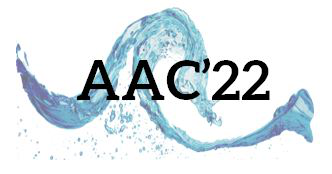Speaker
Description
The optimal performance of XFEL photoinjectors requires laser pulses, typically in the ultraviolet (UV), with non-Gaussian temporal intensity profiles and durations on the order of 10s of ps at photon energies higher than common ultrafast laser systems[1]. Achieving temporal shaping at these durations is non-trivial due to the limited spectral content for transform-limited (TL) pulses and a lack of devices to directly modify the temporal amplitude. Additionally, the necessity for pulses at UV energies can introduce intensity profile distortions during nonlinear conversion.
We present a novel framework to simultaneously generate laser pulses with tunable temporal intensity profiles simultaneously with nonlinear conversion for driving electron photoinjectors used for XFELs, ultrafast electron diffraction, and plasma wakefield acceleration (PWA) applications. Our method consists of a non-colinear sum frequency generation (SFG) scheme where the driving pulses are chirped with equal and opposite amounts of spectral phase that together generate a pulse having a duration and temporal profile roughly equivalent to the combination of the inputs[2]. This method imposes phase shaping on broadband pulses, bypassing TL picosecond pulse spectral bandwidth limitations, to produce intrinsically narrowband pulses with flat spectral phase providing resistance to temporal intensity profile distortion during propagation and nonlinear conversion. We also report an experimental implementation of 26 ps flat-top pulses in the UV from a 1024 nm, 1 MHz, 40 uJ driving laser designed for MHz-rate next-generation XFELs. We demonstrate upwards of 40% conversion efficiency during the nonlinear shaping stage from 1024 nm to 512 nm and 20% to the UV at repition-rates greater than 250 kHz. Lastly, we provide a simulation and possible experimental design of a nonlinear conversion chain to produce triangle-like UV pulses with sharp rise time and subsequent linear ramp towards driving few nanocoulomb electron bunches useful for PWA[3].
[1] Musumeci, Pietro et al. (2008). Physical Review Letters, 100(24), 244801. [2] Lemons, Randy et al. (2022). Physical Review Accelerators and Beams, 25(1), 013401. [3] Hu, Tianzhe et al. (2022). Proceedings NAPAC’22

